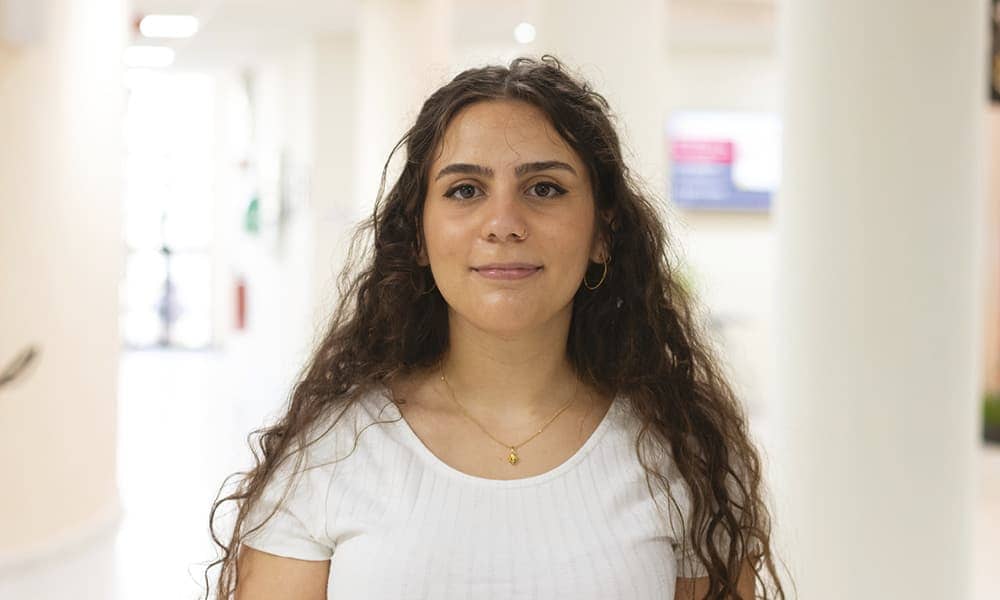How one company is trying to use AI and data to create more liveable and adaptable cities.
The idea of a ‘smart city’ might send the most cynical among us running for cover. From George Orwell’s dire prediction of a world where mass surveillance and control is king, to movies like Minority Report depicting predictive analytics and algorithms gone wrong, pop culture is awash with nightmare worlds where Artificial Intelligence (AI) and technology are used for less-than-innocuous purposes. But to the minds behind Project MARVEL, smart cities are a far more attainable and desirable possibility.
In an effort to dispel my mental image of flying cars and steampunk dystopias, I thought it best to clarify exactly what smart cities are and how we can use AI to our advantage.
‘Put simply, smart cities use a variety of electronic methods (including AI) to collect data which informs city planning decisions,’ Nicole Bonnici, a data scientist and engineer working on the project, explains. As a newly graduated engineer, Bonnici was drawn to the project for opportunities to work with private industry, academia, and researchers, as well as the potential to improve how we experience our streets and open spaces.

University of Malta (UM) Professor Adrian Muscat goes on to explain how our device-centric and interconnected realities constantly transmit data to the internet — whether we choose to or not. From our own wireless devices to security cameras, there are very few ways we can avoid leaving a trace, digitally speaking.
‘There are so many sensors around our cities that are collecting data. Most of this data isn’t used for any particular reason, and Project MARVEL is asking whether something good can come out of this data,’ Muscat explains.
How can Data Help us?
‘One of the main uses of this project is the collection and analysis of data to make better decisions, both in the short term and in the long term. An example of this would be using data collected from transport monitoring cameras to address issues in real time and also to create statistics about road use. These statistics can ultimately help us to support sustainable mobility or more simply, to use transport resources more efficiently without necessarily having to build more roads or junctions, but only by making some modifications to the latter,’ Muscat says.
Bonnici also goes on to explain that addressing societal challenges in sustainability was one of the project’s desired outcomes. This would include promoting bicycle use and pedestrianisation on our local roads. To that end, the project seeks to make roads safer, given that this has been identified as the main deterrent for cycling on the road. ‘If there is a trend of more people cycling on our roads, for instance, it may become a safety concern, and having access to data in real time can lead to faster solutions.’
Muscat points out that Project MARVEL is effectively developing anonymous bicycle detectors as demonstrators to assist both car drivers whilst driving as well as transport engineers in planning. The system is also useful to transportation and road traffic researchers.
‘The idea here is that when bicycles are detected on a stretch of road, car drivers would be notified, inviting them to take greater care. In addition, the speed limit for cars can be automatically lowered in real time to ensure the safety of everyone on the road. Conversely, if no bicycles are present, the speed limit can be set a little higher to allow for faster car traffic flow.’
In addition, the MARVEL framework can eventually be applied to study the use of micro-scooters on Maltese roads and understand how the increased use of these scooters can be better tackled, both in terms of keeping roads safe and predicting whether they will require specific technology or infrastructure in the future.
Project MARVEL (Multimodal Extreme Scale Data Analytics for Smart Cities Environments), which started in 2021, is a Horizon 2020 project involving 17 partners and spanning three municipalities in Europe. Trento in Italy is testing monitoring for crime and dangerous situations, Novi Sad in Serbia is looking at crowd monitoring and security, and Malta is investigating road traffic management.
Privacy
Of course, this idea of data collection and processing will ring a few bells and harken back to our earlier mention of George Orwell’s 1984, but Muscat and Bonnici stress that privacy has been at the heart of the project from the beginning.
‘It’s important to point out that although the project uses audio and visual recordings, the aim of the data is not punitive or to identify contraventions,’ Bonnici explains, adding that security is central to the framework of the data collection and includes video and voice anonymisation software.
Of course, capturing such vast volumes of data and processing it in this way presents further challenges, both from a financial and a scientific and engineering perspective.
‘One of the most costly aspects of this process is the annotation of the data itself,’ Bonnici explains. ‘The data requires people to label and sort it so that the AI system can effectively be ‘trained’ to do the intended job.’ Training usually involves showing the AI system many examples of the data; the system then uses these examples to fit a complex computer model that maps the input to the output.
The Edge, the Fog, and the Cloud
Furthermore, the team explains that the project has also encountered issues in the levels of data processing required. In essence, data processing takes place at three different levels in this project: the Edge, which refers to data being collected and processed as close to the source as possible, e.g. in the same location as a security camera; the Fog, which refers to data processed on a nationwide system; and the Cloud, which processes data from anywhere in the world.
‘The project is essentially trying to push as much of the computation as possible to the Edge to allow for more real-time reactions,’ they explain. In fact, the project is also working on so-called ‘anomaly detection’. This would theoretically allow an AI system to monitor a road junction and flag if an accident or some other abnormal event occurs. The notification would be passed on to traffic controllers, for example, who could react accordingly to allow for minimal disruption to other road users in real time.
‘The project also aims to minimise downtime and make efficient use of the infrastructure in place. This is done through changing the layer in which data is being processed based on the availability of computational power and the needs of the user,’ Bonnici adds.
Focusing on Edge data processing also means that AI components need to be compressed to be more efficient, thus consuming less power. Components of the Fog or Cloud do not need this compression as computational resources and power consumed are less of a concern. This may present a challenge for hot countries like Malta, where numerous solutions readily available on the market would overheat and fail.
‘Given that one of the main aims of this project was to encourage people to consume less fossil fuel and opt for sustainable transport instead of cars, it is quite ironic that data collection itself can be so energy hungry, but MARVEL is also using this local section to develop AI models that are more efficient and consume less power,’ Muscat adds.
Perhaps one of the things that becomes clear when discussing this project, is its interdisciplinary nature and the number of teams that it brings together.
Perhaps one of the things that becomes clear when discussing this project, is its interdisciplinary nature and the number of teams that it brings together. The local company Greenroads was initially invited to be a part of MARVEL because of their own R&D into monitoring road traffic. Greenroads, as well as Muscat, hopes for the ideas and results of MARVEL to be used for practical decisions and for this to be the first of many projects to use data as a means to an end for the greater good.
‘I personally hope that this project will help authorities to make more data-driven decisions to help people in their daily lives,’ Bonnici says.
Despite its numerous challenges, it’s safe to say that the current research augurs smarter solutions, (in all the various meanings of the adjective). So perhaps we can take off our tin foil hats and dispel our fears of bots taking over society as we know it (at least for a little while) and look forward to tailored and timely solutions to our omnipresent traffic issues.
Project MARVEL (Multimodal Extreme Scale Data Analytics for Smart Cities Environments) is a Horizon 2020 project involving funded by the European Commission (grant agreement no. 957337)
Author
-
Martina writes on a freelance basis for a number of publications including Think Magazine. She works in children’s publishing in London and has a background in journalism. Previous writing credits include MaltaToday and other other local content writing agencies. Her favourite topics to write about include lifestyle, culture and health issues. She also enjoys interviewing people and learning about new topics as part of her research. She holds an MA in Publishing and previously read for a BA in English at the UM. In her free-time, she can be found sipping tea in coffee shops, reading or trying out new hobbies.
View all posts





Comments are closed for this article!